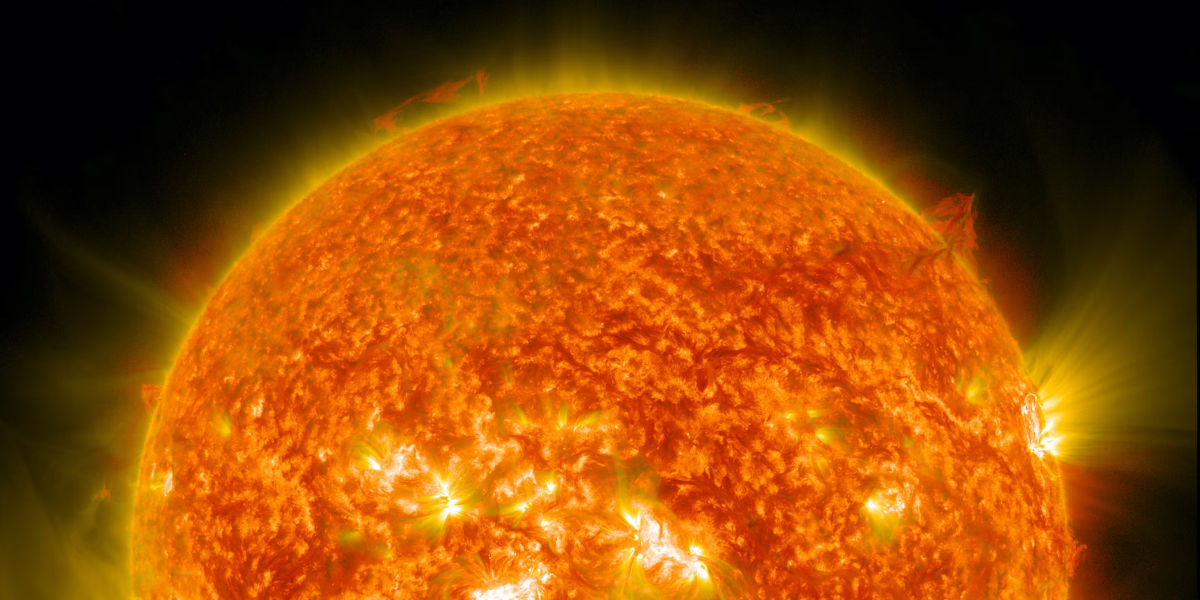The sun, that brilliant, fiery orb in our sky, has long been subject of awe, worship, and scientific study alike. Its warmth and light have enabled life on earth; yet, like the curious double-edged sword, solar activities such as solar flares can pose a threat to our contemporary mode of existence. Solar Flares and their effects are a socio-scientific phenomena not only worth understanding but crucial in predicting and bracing for potential impacts on our civilization.
Subtly brewing storms in the heart of the Sun occasionally send out stormy solar temper tantrums – the solar flares, in a spectacle of electromagnetic dazzle. But what happens to the Earth caught in this cosmic crossfire? The aim of this article is to illumine readers about Solar Fury – uncovering the profound impact of solar flares on Earth and their potential disruption of our technology-reliant civilization.
Part One: Decoding Solar Flares
Solar flares, the Solar System's largest explosive events, are intense bursts of radiation surging from the release of magnetic energy associated with sunspots. The more nefarious counterparts to the captivating Northern Lights, these flares extend to all layers of the solar atmosphere - the photosphere, chromosphere, and corona.
Quantified on a scale of classes – 'C', 'M', and 'X', where 'C' denotes a weak, often harmless event, 'M' denotes a flare of medium potency, and 'X' represents the most severe category – solar flare events can crank up to an energy output of 1X10^32 ergs.
Significantly, the released radiation spans the entire electromagnetic spectrum, from radio waves at the long wavelength end, through optical emission to x-rays and gamma rays at the short wavelength end.
The Whiplash: Solar Flares and Their Effects on Earth
While the heavy-duty radiation from a solar flare doesn't directly harm humans on Earth, it does disturb our atmosphere in the layer where GPS and communication signals travel – leading to potential radio blackouts and GPS navigational issues. In space, it’s far more alarming as it poses a severe threat to astronauts by increasing their exposure to the harsh element of radiation.
More intense solar flares can also instigate solar energetic particles (SEP) events and coronal mass ejections (CMEs). The latter, characterized by large bubbles of gas and magnetic field lines hurled from the Sun, can highly impact the Earth's magnetosphere. If the conditions are sufficient, it can trigger extreme geomagnetic storms, potentially causing long-lasting power outages and spine-chilling ‘lights out’ scenarios.
All these highlight the importance of forecasting solar flares, and in the next section, we dive deep into the realm of solar flare predictions.
From Dawn till Dusk — Understanding the Power Play of Sunspots
Solar flares, often accompanied by powerful sunspots, are sudden flashes of increase in the Sun's brightness. They arise from a solar magnetic instability and can last from minutes to hours. A significant number of these lead to coronal mass ejections (CMEs) whereby enormous bubbles of superheated gas — known as plasma — are ejected into space. Eventually, some of this matter reaches Earth, with the potential to inflict serious damage to our civilization.
Sunspots, the visible dark patches on the Sun's surface, are regions of intense magnetic activity. Their sudden emergence and disappearance, along with the high-speed solar winds that they emit, causing a geoeffectiveness, the effects of which can vary significantly. Small-scale winds might cause exquisite auroras, but, if large and frequent enough, these can lead to geomagnetic storms affecting our Earth's magnetosphere detrimentally.
The Cascade — From Sun to Earth
The plasma-filled CMEs, when launched into Space, travel the 150 million kilometers to Earth in 1 to 3 days. As they are composed of charged particles, they can interact with Earth's magnetosphere and cause a disturbance — a geomagnetic storm. Sculpting the magnetosphere into a teardrop shape, the aftermath of these storms can range from the exquisite, like auroral displays, to the catastrophic, like power grid failures.
The Gravity of the Gravity: The Impact on Our Lives
The adverse effects of powerful geomagnetic storms are far-reaching. The currents induced by the storm can overload power grids, leading to widespread blackouts. These blackouts can last much longer than those caused by terrestrial weather events since the geomagnetically induced currents (GICs) can permanently damage power transformers.
The storms can also influence our communication and navigation systems. They cause erratic signals and disturbances in the GPS service. Air travel requires GPS for navigation and landing, radio for communication, and both can be severely disrupted during these storms. Further, increased radiation levels during the storm pose an additional risk to aircrew and passengers on high-altitude flights.
Forecasting and Other Precautions
Fortunately, we are not entirely at the mercy of these solar storms. Ground and space-based observatories keep a watchful eye on the Sun, looking for the telltale signs that precede a flare or a plasma ejection. We usually have a warning period of one to three days during which precautions can be taken to minimize damage.
The precautions vary based on the systems at risk. Power companies can temporarily disconnect transformers or reduce power loads on lines. Satellite operators can shift to backup systems or turn off vulnerable components. Pilots can reroute flights to avoid problematic areas, and astronauts can take shelter in specially shielded areas of spacecraft or space stations.
Solar Fury — a term used to denote the impact of solar flares on Earth and our civilization, certainly causes varying destructive impacts. However, with advancements in space weather prediction and preventive measures, we are ensuring our continual adaptation and resilience against this cosmic phenomenon.
In Conclusion
While we continue to enjoy the benefits of our technological world, it is critical that we maintain our vigilance against solar fury. At every level of society, from individuals to industries, it is essential to be aware of solar weather forecasts and take necessary precautions to safeguard ourselves and our assets. Only then, can we both respect and protect ourselves from the intense power of our star, the Sun.




